Its been a horror of a year. Wet days mixed up with rain.
Maybe thats a good thing though. It teaches me to innovate, experiment, diversify.
I thought a list of all our garden hardships - and perhaps more importantly what we plan to do about them - might be interesting to anyone else fighting frustrations and failure
Our failures.
Problem
Blighted potatoes - and we fear its spread to the toms.
Lesson
I'm hoping that the Oca we are growing will act as a blight resistant alternative. Oca has much more delicate foliage though....susceptible to wind damage
Problem
Carrot failure
Lesson
Keep plenty of seed. Seed save enough for three to four annual needs. Sometimes seed will rot, sometimes the crop to be seed saved will die. When all the seed is gone you are royally hosed. I'm on my fourth carrot sowing this year.
Problem
Sundry crop fails
Lesson
Keep plenty of seed for "catch crops" = short time crops that can occupy a space between major re-planting. I have sown peas in the potato bed - I will at least get something this year
Problem
Pigeon damage on young peas
Lesson
Eat more pigeon
Have net frames ready made and available to set up over young crops. Really saved us this year
Problem
Birds getting through the netting on the strawberry bed
Lesson
Bird net that keeps pigeons off peas (two inch mesh), is too wide to keep small birds off berries. I have bought 1" mesh to keep the blackbirds off the berries. A lesson that cost me a lot of early berries
Problem
Bad weather in blossom time meant many insect pollinated fruit trees will bear no fruit this year
Lesson
Diversity! The wet weather has given us a great rhubarb crop. No apricots - but plenty of rhubarb crumble.
Problem
Something is eating my seed on my second year parsnips
Lesson
There is a critter called the parsnip webworm...my first year seed saving parsnip and I have learned this. The real lesson - practice all these skills now - when failure can be got around.
Problem
You can get through vast amounts of water - not so much this year, but in general. I have found a good drench in a 100 square foot greenhouse takes 50 gallons (200 litres). I have two of them....400 litres. 10 beds around the same size......2,000 litres. Plus a rhubarb bed, gooseberry bed....2,500 litres. Throw in the seedlings and fruit trees. 3,000 litres (say 750 gallons).
I am currently holding 6,500 litres in overground tanks for gardening. Its okay for day to day use, but not in a drought. I'll try to take it up to 10,000 litres in the next building foray.
Overall...
Monocropping is a bad thing. Keep a mix and every year you will get some success and some failure
Experiment with the new and unusual...I only found out about Oca recently - but it may be a cure for blight problems
Learn the ongoing ways to manage pests and problems - and understand the pests you face - including the weather. When it comes to seeds the old verses are true.
Its not all bad though - we will get a crop in
The parsnips are doing great - having been re-sown a second time
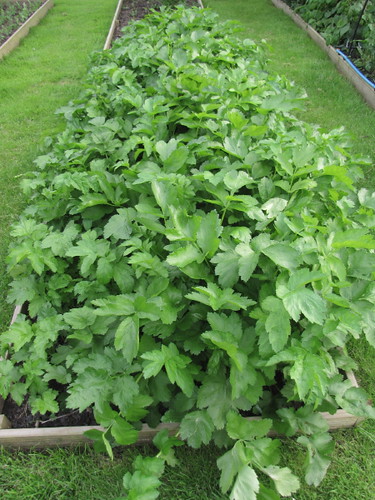
Parsnip by British Red, on Flickr
The Swede (rutabaga) planted where the blighted potato was removed are germinating fine

Swede by British Red, on Flickr
The catch crop of late sown peas where the onions and garlic were lifted are doing okay - no pigeon attacks this time as its later in the season
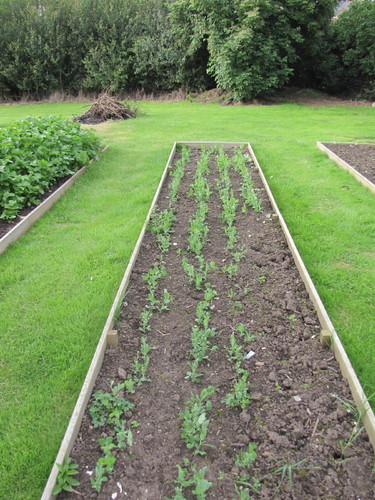
Second sowing peas by British Red, on Flickr
Our experiment in field beans seems to be doing okay
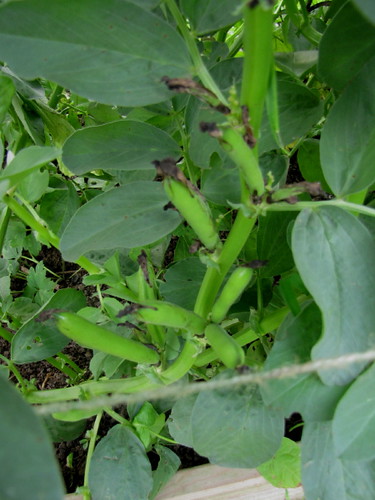
Field beans by British Red, on Flickr
The Trail of Tears beans seem to be very reliable - I'm delighted with these as they were "seed saved" last year

Trail of tears beans by British Red, on Flickr
(these were last years beans - this years seeds)
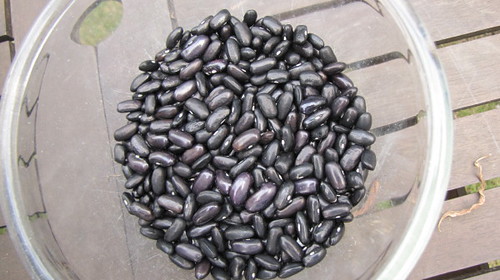
Trail of Tears Beans by British Red, on Flickr
The netting over the first pea sowing seems to have paid dividends

First pea sowing by British Red, on Flickr
Happy again - as this is what they came from
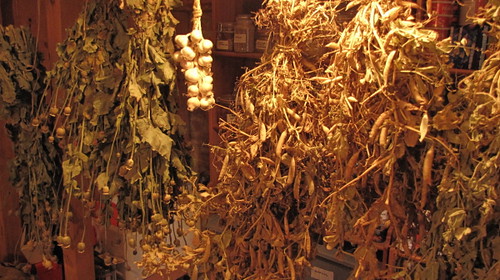
Peas Drying by British Red, on Flickr
I had to leave the corn late - the soil was so cold and wet it would have rotted. Its growing...but whether it will make ears, I don't know

Corn by British Red, on Flickr
The brussel sprout netting has worked like a charm! Companion planting with calendula has eliminated whitefly too
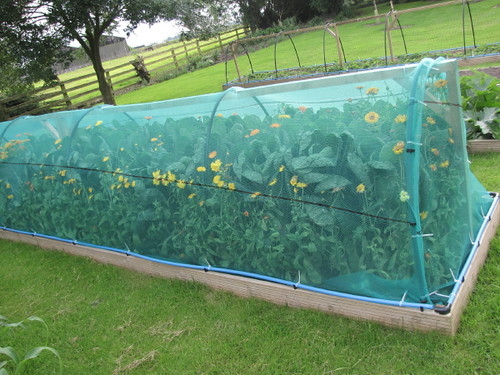
Brussels by British Red, on Flickr
The courgettes have done really well this year - the flowers in salads as well as many courgettes!
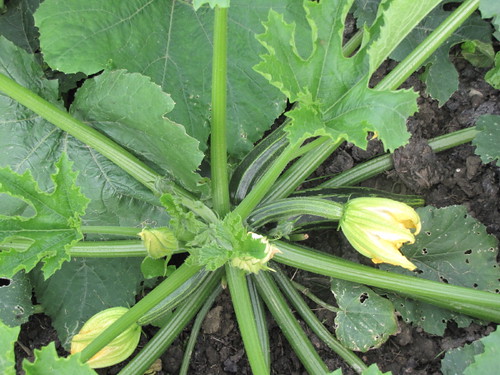
Courgette by British Red, on Flickr
I have hopes for the third carrot sowing!
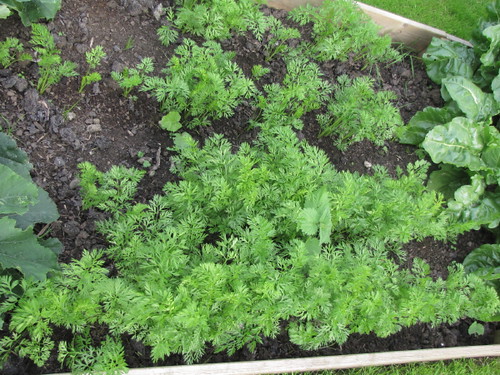
Carrots by British Red, on Flickr
We have also found that Sugar beet is fantastic - the leaves are great in salad or used like spinach!
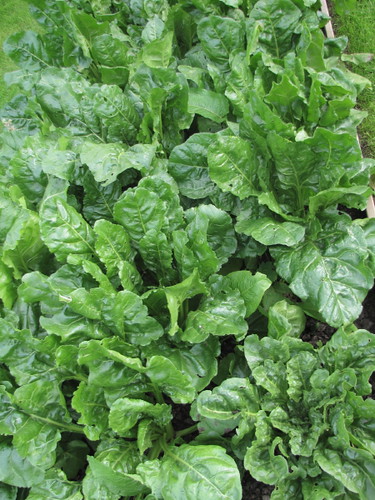
Sugar Beet by British Red, on Flickr
Oh yeah - this little beastie is a parsnip webworm
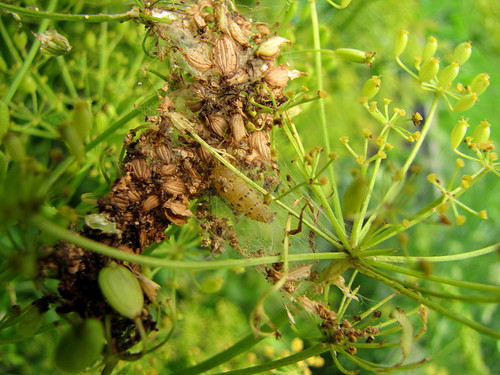
Parsnip webworm by British Red, on Flickr
Red
Maybe thats a good thing though. It teaches me to innovate, experiment, diversify.
I thought a list of all our garden hardships - and perhaps more importantly what we plan to do about them - might be interesting to anyone else fighting frustrations and failure
Our failures.
Problem
Blighted potatoes - and we fear its spread to the toms.
Lesson
I'm hoping that the Oca we are growing will act as a blight resistant alternative. Oca has much more delicate foliage though....susceptible to wind damage
Problem
Carrot failure
Lesson
Keep plenty of seed. Seed save enough for three to four annual needs. Sometimes seed will rot, sometimes the crop to be seed saved will die. When all the seed is gone you are royally hosed. I'm on my fourth carrot sowing this year.
Problem
Sundry crop fails
Lesson
Keep plenty of seed for "catch crops" = short time crops that can occupy a space between major re-planting. I have sown peas in the potato bed - I will at least get something this year
Problem
Pigeon damage on young peas
Lesson
Eat more pigeon
Have net frames ready made and available to set up over young crops. Really saved us this year
Problem
Birds getting through the netting on the strawberry bed
Lesson
Bird net that keeps pigeons off peas (two inch mesh), is too wide to keep small birds off berries. I have bought 1" mesh to keep the blackbirds off the berries. A lesson that cost me a lot of early berries
Problem
Bad weather in blossom time meant many insect pollinated fruit trees will bear no fruit this year
Lesson
Diversity! The wet weather has given us a great rhubarb crop. No apricots - but plenty of rhubarb crumble.
Problem
Something is eating my seed on my second year parsnips
Lesson
There is a critter called the parsnip webworm...my first year seed saving parsnip and I have learned this. The real lesson - practice all these skills now - when failure can be got around.
Problem
You can get through vast amounts of water - not so much this year, but in general. I have found a good drench in a 100 square foot greenhouse takes 50 gallons (200 litres). I have two of them....400 litres. 10 beds around the same size......2,000 litres. Plus a rhubarb bed, gooseberry bed....2,500 litres. Throw in the seedlings and fruit trees. 3,000 litres (say 750 gallons).
I am currently holding 6,500 litres in overground tanks for gardening. Its okay for day to day use, but not in a drought. I'll try to take it up to 10,000 litres in the next building foray.
Overall...
Monocropping is a bad thing. Keep a mix and every year you will get some success and some failure
Experiment with the new and unusual...I only found out about Oca recently - but it may be a cure for blight problems
Learn the ongoing ways to manage pests and problems - and understand the pests you face - including the weather. When it comes to seeds the old verses are true.
'One for the mouse,
One for the crow,
One to rot,
One to grow
Its not all bad though - we will get a crop in
The parsnips are doing great - having been re-sown a second time

Parsnip by British Red, on Flickr
The Swede (rutabaga) planted where the blighted potato was removed are germinating fine

Swede by British Red, on Flickr
The catch crop of late sown peas where the onions and garlic were lifted are doing okay - no pigeon attacks this time as its later in the season

Second sowing peas by British Red, on Flickr
Our experiment in field beans seems to be doing okay

Field beans by British Red, on Flickr
The Trail of Tears beans seem to be very reliable - I'm delighted with these as they were "seed saved" last year

Trail of tears beans by British Red, on Flickr
(these were last years beans - this years seeds)

Trail of Tears Beans by British Red, on Flickr
The netting over the first pea sowing seems to have paid dividends

First pea sowing by British Red, on Flickr
Happy again - as this is what they came from

Peas Drying by British Red, on Flickr
I had to leave the corn late - the soil was so cold and wet it would have rotted. Its growing...but whether it will make ears, I don't know

Corn by British Red, on Flickr
The brussel sprout netting has worked like a charm! Companion planting with calendula has eliminated whitefly too

Brussels by British Red, on Flickr
The courgettes have done really well this year - the flowers in salads as well as many courgettes!

Courgette by British Red, on Flickr
I have hopes for the third carrot sowing!

Carrots by British Red, on Flickr
We have also found that Sugar beet is fantastic - the leaves are great in salad or used like spinach!

Sugar Beet by British Red, on Flickr
Oh yeah - this little beastie is a parsnip webworm

Parsnip webworm by British Red, on Flickr
Red
